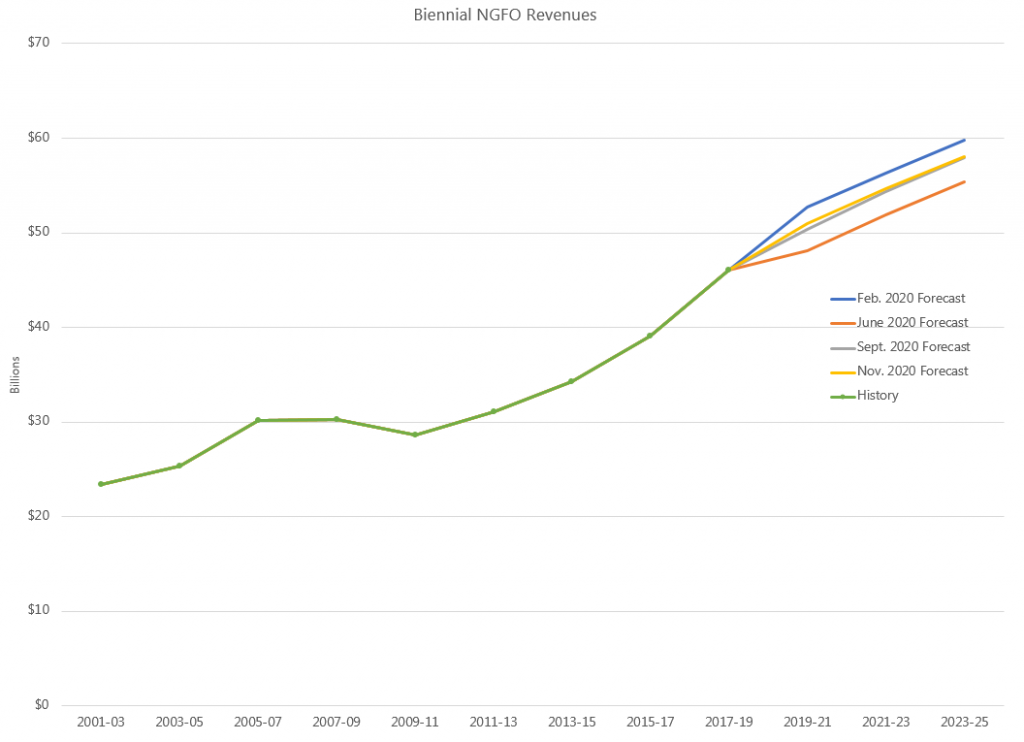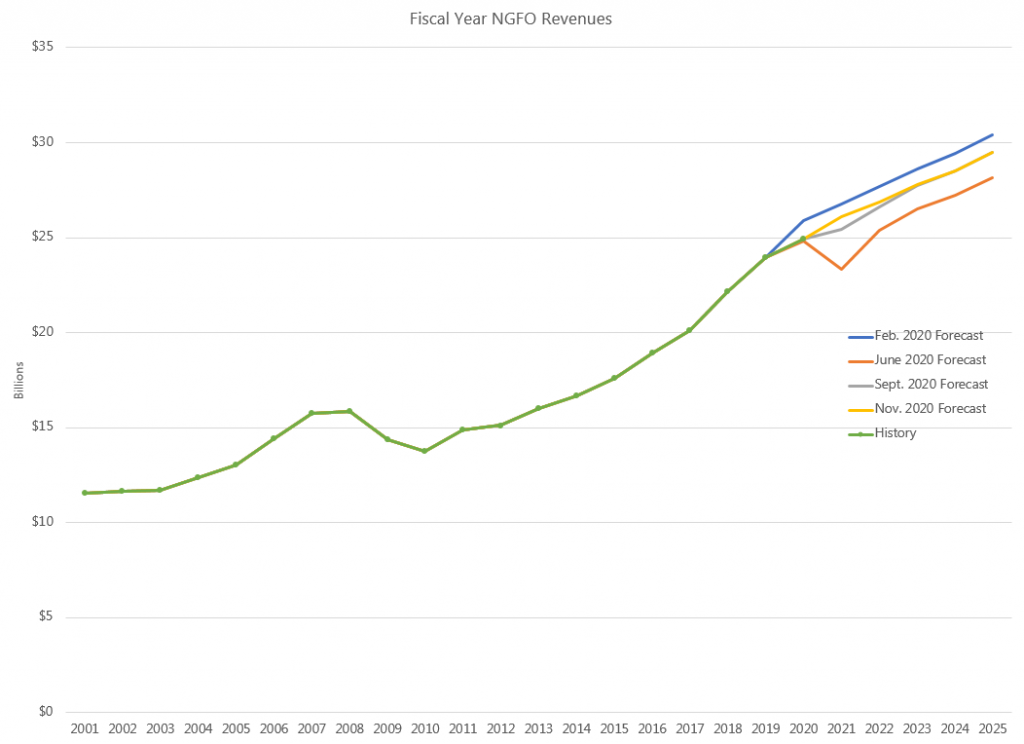2:32 pm
November 19, 2020
As Kriss wrote yesterday, the Economic and Revenue Forecast Council now expects state revenues for 2019–21 and 2021–23 to be higher than forecast in September, but still below the levels that had been expected in February (on which the enacted 2019–21 budget is based).
The charts show how dramatically the forecasts have changed this year, by biennium and fiscal year. (The yellow lines are the current forecast.) It’s important to note that even though revenues are below what was expected in February, they are still forecast to increase in each year.
Consider, too, how much state revenues have increased since the Great Recession. From FY 2008 (the pre-recession high point) through FY 2020, revenues grew by 57.0%. (Adjusted for inflation, that figure is 32.1%).
Actual FY 2020 revenues came in at $24.915 billion. That’s $1.004 billion less than had been anticipated in February, but still $977 million (4.1%) higher than FY 2019. Revenues for the 2019–21 biennium were forecast in February to increase by 14.3% over 2017–19. Now, they are expected to increase by a still substantial 10.7% over 2017–19.
Lucy Dadayan of the Urban Institute reports that Washington is one of 12 states in which state tax revenues from March to September 2020 increased over the same period in 2019. The Wall Street Journal adds,
Sales tax revenue in most states hasn’t fallen as much as expected because many Americans haven’t reduced spending. They are spending on different things. They are buying more appliances to remodel their homes while spending less on personal services like hair cuts and dry-cleaning, which most states don’t tax.
Earlier I wrote about how the November revenue forecast affects the budget outlook.
Categories: Budget.

